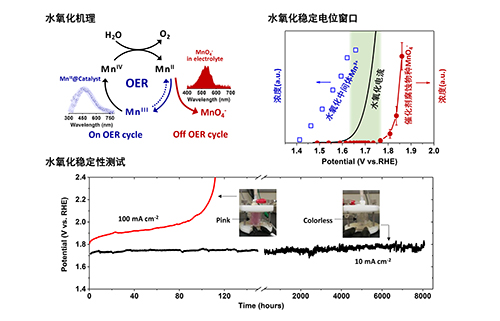Recently, Han Hongxian, a researcher from the State Key Laboratory of Catalysis Fundamentals and the Solar Energy Research Department of the Dalian Institute of Chemical Physics, Chinese Academy of Sciences, and Li Can, a member of the Chinese Academy of Sciences, and the Ryuhei Nakamura research team of the Institute of Physics and Chemistry of Japan (RIKEN) cooperated to electrocatalyze non-noble metals under acidic conditions New progress has been made in the research of decomposed water, and related research results are published in "Angel. Chem. Int. Ed."
Converting solar energy into "solar fuel" commonly known as "liquid sunlight" is an important renewable energy strategy to deal with future depletion of fossil fuels and climate change. In recent years, solar and other renewable energy generation has gradually become the cheapest power generation technology. The use of photovoltaic power to drive electrolyzed water (PV-E) to produce hydrogen is one of the most feasible large-scale renewable energy hydrogen production technologies. Among many electrolyzed water technologies, proton exchange membrane (PEM) electrolyzed water technology has attracted widespread attention. But so far, only the precious metal IrOx can decompose water stably under the PEM acid environment and anode polarization conditions, which greatly limits the large-scale application of PEM electrolysis water technology. Therefore, the development of an inexpensive, efficient, and acid-stable oxygen evolution (OER) catalyst that can replace the precious metal Ir is particularly important for the development of PV-PEM large-scale hydrogen production technology. The Solar Energy Research Department has long been devoted to photocatalysis, photocatalysis and electrocatalytic water splitting technology: in the field of electrocatalysis, nickel iron hydroxide has been developed successively (Angew. Chem. Int. Ed., 2014; J. Am. Chem. Soc ., 2016), multimetal bifunctional catalyst FeCoNi (ACS Catal., 2018), CoOx nanoparticle catalyst (Chem. Sci., 2017), mononuclear manganese water oxidation catalyst (Nature Catalysis, 2018) and other decomposing hydropower catalysts. However, these catalysts all face the problem of low stability under acidic conditions.
At present, there are no reports about non-precious metal electrocatalysts that decompose water stably under acidic conditions for a long life. In this work, researchers found that γ-MnO2 can achieve stable water decomposition performance under acidic conditions within a range of special potential windows, and achieved more than 8,000 hours of stability testing. The cooperative research team used in-situ spectroelectrochemical analysis and other analytical methods to systematically study the activity and stability of γ-MnO2 electrocatalytic water oxidation under acidic conditions, and to determine the activation of γ-MnO2 under water under acidic conditions. , Water oxidation reaction and corrosion deactivation reaction three kinds of potential correlation. Experiments show that controlling the electrolyzed water reaction within a certain OER potential window is a necessary condition for the stable operation of γ-MnO2 under acidic conditions. This work provides new ideas for the development of inexpensive, stable and efficient OER electrocatalysts that can replace IrOx transition metal groups.
This work was funded by the National Natural Science Foundation of China, the Ministry of Science and Technology's key research and development plan nanotechnology project, and the RIKEN International Project Assistant Research Program (IPA).

Compression Spring,Irregular Compression Spring,Customized Compression Springs,Compression Spring Processing
Dongguan Jiufukai Hardware Products Co., Ltd , https://www.jfkspring.com